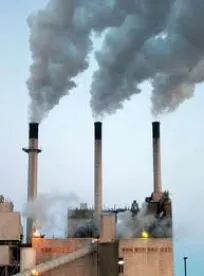Following up on our October 2015 legal alert, on February 9, 2016, the U.S. Supreme Court stayed the “Clean Power Plan” regulations promulgated by the U.S. Environmental Protection Agency (EPA) until the legal challenges to the regulations are resolved. While there is no date certain for this resolution, our analysis suggests that a final judgment may not be reached until sometime in 2017, assuming the need for Supreme Court review. The stay is seen by some as a relief to industry, which had been placed in the position of considering long-term investment decisions based on the Clean Power Plan prior to the validity of the regulations being determined by a court. However, the added uncertainty as to the Clean Power Plan’s future requires additional consideration by industry.
The controversial regulations known as the “Clean Power Plan” were published on October 23, 2015, under the Clean Air Act and seek to control greenhouse gas emissions from existing electric generating utilities. Among other things, the regulations require that states develop plans to satisfy the “best system of emission reduction” (BSER) as determined by EPA. According to these regulations, BSER is generally comprised of three building blocks that individually and together reduce the carbon intensity of electricity generation:
-
Building Block 1 – increasing the operational efficiency of existing coal-fired power plants.
-
Building Block 2 – shifting electricity generation from higher emitting fossil fuel-fired steam power plants (generally coal-fired) to lower emitting natural gas-fired power plants.
-
Building Block 3 – increasing electricity generation from renewable sources of energy like wind and solar.
In granting the application for stay, the Supreme Court issued a one-page order stating that the Clean Power Plan
… is stayed pending disposition of the applicants’ petitions for review in the United States Court of Appeals for the District of Columbia Circuit and disposition of the applicants’ petition for a writ of certiorari, if such writ is sought. If a writ of certiorari is sought and the Court denies the petition, this order shall terminate automatically. If the Court grants the petition for a writ of certiorari, this order shall terminate when the Court enters its judgment.
The Supreme Court split its vote 5-4, in approving the stay. Justices Ruth Bader Ginsburg, Stephen Breyer, Sonia Sotomayor and Elena Kagan opposed granting the stay, and Justices Clarence Thomas, John Roberts, Antonin Scalia, Anthony Kennedy and Samuel Alito approved the stay request.
The Supreme Court’s order followed a denial of the requested stay by the D.C. Circuit Court of Appeals. The stay was requested pending the outcome of litigation challenging the Clean Power Plan brought by 29 states and various industry groups. The effect on the development of state carbon implementation plans is unclear at this time.









 />i
/>i
